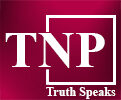If one were to understand political trends in the country from election results, one must look not only at the total figures, but more so at the gap between the expected and the actual results. I am not talking of the opinion-polls. Correctness of opinion polls depends upon the sample size as well as the extent to which it represents the diversity of interest groups. By expected results I refer to the “gut feeling” based on our perception of various factors that might combine to give a specific result for different parties.
The expectation about Gujarat and Himachal was based on our answers to certain crucial questions:
- Would the 27-year anti-incumbency of BJP in Gujarat result in a drubbing for the party?
- Would Congress’s avowed strategy of “quiet micro-management” in Gujarat give dividends?
- Would the Modi magic work in Gujarat as well as Himachal, and over-ride the anti-incumbency in the two states?
- Was AAP’s hype merely a bubble or would it get translated into a groundswell of votes and seats?
- Would the benefits from Bharat Jodo as well as the change of guard in Congress get reflected in the performance of the party?
These questions are relevant only to Gujarat, because Himachal is a relatively small state and the results do not show a huge gap between BJP and Congress.
About Gujarat, I said in an earlier article on this blog that AAP crossing 10 seats would be a great victory for the party, and Congress getting limited within 50 would be a great defeat for the party. AAP has just managed to register a small presence in the state, while Congress’s performance is dismal.
The performance of AAP and Congress in Gujarat is significant for a projection of the possible outcome of 2024.
Here are my views:
I think the Congress’s decline will continue. This is because the top leadership in party has lost ability to inspire the ground-level workers. AAP may grow in different states by bringing together those who oppose the BJP’s ideology and by utilising the caste-based rifts in the society. But AAP’s growth-potential is limited by the disillusionment that is beginning to set in about Mr. Kejrival’s style of functioning.
I am in touch with my friends from Punjab who tell me that things are going from bad to worse in the state. The law-and-order situation is in a miserable condition. All power is with the CM, Mr. Bhagwant Maan, and with Raghav Chaddha. The government has little control over the bureaucracy, and corruption is on the rise. The drug-menace is getting out of control and this has made the AAP government unpopular among the masses. AAP is doing nothing to control Khalistani extremism, which has put lives of people under constant threat.
Modi, not BJP
BJP is gradually becoming an instrument in Modi Ji’s hands. Modi Ji has grown beyond the party and the nation and has become an ideology. This ideology has the following elements:
- Connecting India to its glorious past, while at the same time encouraging the growth of science and technology.
- Promoting the religious, racial, cultural, and regional diversity in the nation, but not allowing these to grow beyond the larger reality that the emerging India is.
- Promoting a national identity based on shared values, beliefs, and ambitions. While such an identity would permit diversity, it would not allow interest-groups to pull the country apart under the influence and with the support of external agencies.
A Revolution in the Offing
A Chinese-type revolution that will combine the cultural revolution of Mou Tse Tung and the economic revolution of Chou En Li seems to be on the anvil. This revolution will result in the emergence of an Indian culture that connects us to our roots and is acceptable to everyone. Once this culture pervades the length and breadth of the nation, there will be no distinctions between members of various religions except their religious beliefs, which will be purely a matter of personal faith. One hindrance to this state-of-affairs is the notion propagated by some Muslim leaders that they are the progeny of Babur and Akbar. Once that argument is taken, then they would naturally be looked upon as aggressors who must be sent back to the country from where they came. The cultural revolution that is the need of the hour now must spread the realisation of the Indian origin of every citizen of India.
What about Regional Parties?
In a country with such vast diversity, regional parties play a very important role. They represent the aspirations of the people of different regions. The Prime Minister has on many occasions emphasised the importance of regional parties in our Indian polity.
At one time, during the Chief Ministership of Kalaignar Karunanidhi, there was a political alliance between BJP and DMK. This resulted in a situation in which the so-called Hindutva focus of the BJP as well as the atheistic posture of the DMK got blurred. The political combo catered to a more comprehensive spectrum of interests. During that period several Hindu temples were renovated and Kumbhabishekams conducted. Senior ministers of DMK themselves supervised the arrangements, although, in accordance with their political ideology, they did not step into the temples. The efforts taken by the government boosted the faith of the masses in the intentions of the government.
Has the time come again, perhaps, for an alignment between the BJP and the DMK?



